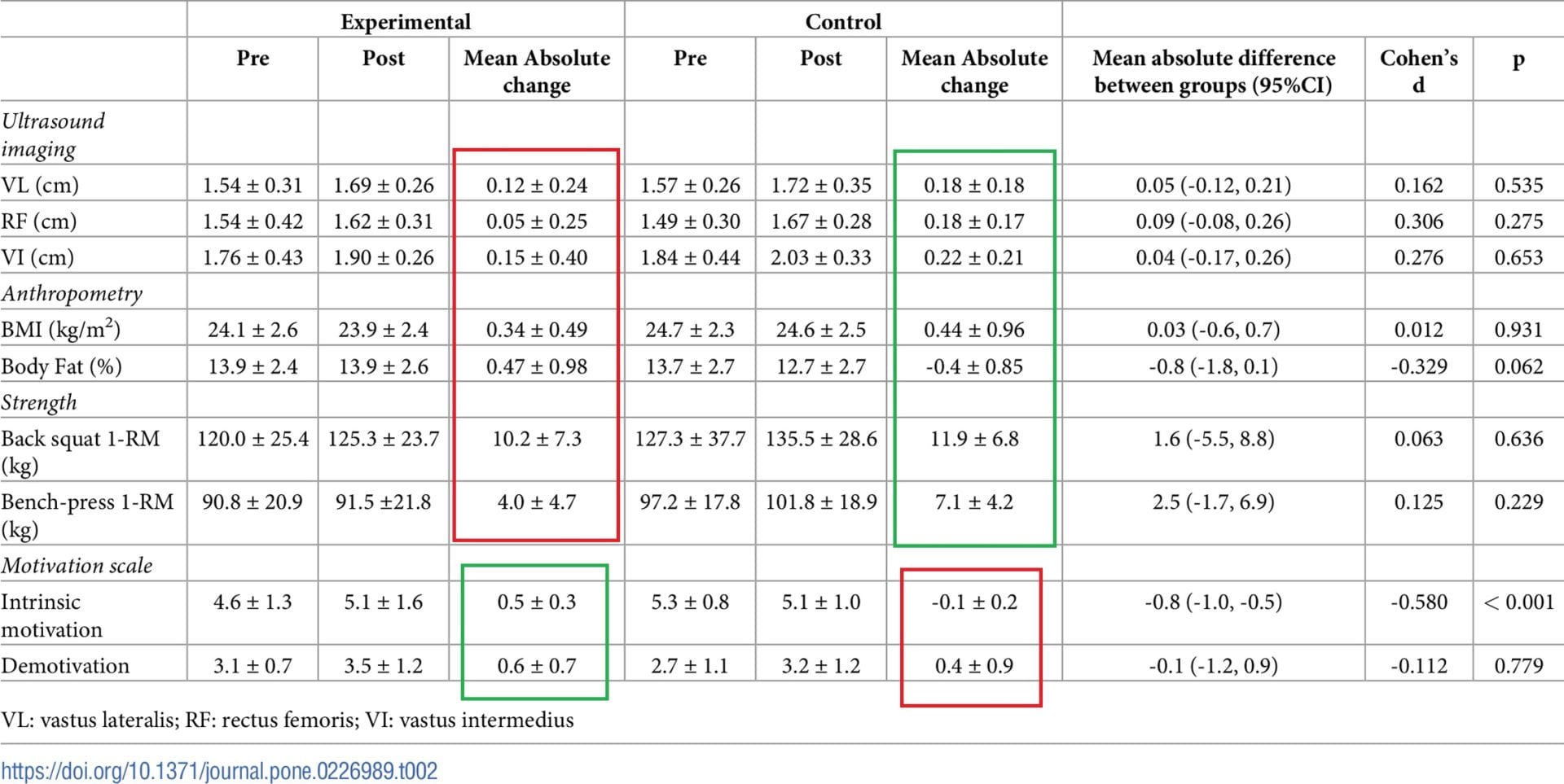Fixed or varied exercise selection: which is better? New study review
Should you vary up your exercises from session to session for ‘muscle confusion’?
A great new study by Baz-Valle et al., co-authored by my friend Brad Schoenfeld, compared a fixed exercise selection to a similar push-pull program with high exercise variation in trained men. The muscle confusion group got their exercises for each movement pattern (push vs. pull) randomly selected by an app each workout. Both groups performed the same number of sets for each muscle group and went to volitional failure in the 6-12 RM range.
There were no significant differences between groups in muscle growth (quad ultrasound), body composition change or strength development (1RM bench and squat).
The muscle confusion group did experience a significant increase in intrinsic motivation to lift, so you may argue varying up your exercises each day is an extra enjoyable way to train without any downsides.
However, this was an 8-week study in trained individuals and no power analysis was performed, so the authors acknowledged the statistical significance of the findings may not fully demonstrate their practical significance. This is a reality of exercise science studies. People achieve different results not just because of the different intervention but also because of their different genetics, different diets, different lifestyle, different training effort, etc.
So let’s dive in a bit deeper. If we look at the absolute changes in both groups, which I’ve highlighted below, you can see the fixed-exercise control group achieved better gains across the board. And not just a little bit. Percentage wise, muscle growth was ~350% greater for the rectus femoris and 50% greater for the other 2 measured heads of the quads in the fixed-exercise group. They also gained more weight (BMI) despite losing a little bit of fat on average, while the muscle confusion group seemed to have been in greater energy surplus based on their greater body fat gain. Strength gains were also non-significantly greater in the fixed-exercise group, but this is unsurprising, as they performed the tested exercises more often.

Excessive variation in exercises may induce excessive muscle damage from the relatively novel stimulus each workout, causing more protein breakdown and longer recovery times.
There are 2 reasons why a fixed-exercise selection may be (even more) favorable in practice.
First, the muscle confusion group in this study trained with a different rep range every workout (6-12RM), effectively implementing daily undulating periodization. The fixed-exercise group had linear periodization, meaning they started off with 12RM loads and every 2 weeks they increased their training intensity to up to 6RM in the final 2 weeks. While most literature finds no difference in muscle growth between different periodization models, daily undulating periodization quite consistently leads to greater strength gains and some research suggests varying up your rep ranges may increase muscle growth as well.
Second, the fixed-exercise group didn’t seem to have any instructions to implement progressive overload as rapidly as possible. The researchers stated: “The control group performed the same number of repetitions to failure per set each day of the week.” That’s a bit of a curious sentence, as you can’t guarantee the same repetition number if people train to failure, but more importantly, performing the same number of reps each day of the week suggests they weren’t aiming to progress from one workout to the next. If they had done so, they may have made even better gains. Progressive overload may be the greatest practical benefit of a fixed exercise selection: you can monitor your progression and implement progressive overload. My experience with my clients is that having a clear progression model and making objectively measurable good progress is not only crucial to optimize and individualize a program but it’s also very motivating. Nothing is as motivating as good results.
Overall, this study supports previous research on muscle confusion that it’s broscience. Implementing variety in your training just for the sake of it is more likely to be harmful than helpful.

Study reference
The effects of exercise variation in muscle thickness, maximal strength and motivation in resistance trained men. Baz-Valle et al. 2019. doi.org/10.1371/journal.pone.0226989
 Want more content like this?
Want more content like this?
Then get our free mini-course on muscle building, fat loss and strength.
By filling in your details you consent with our privacy policy and the way we handle your personal data.
